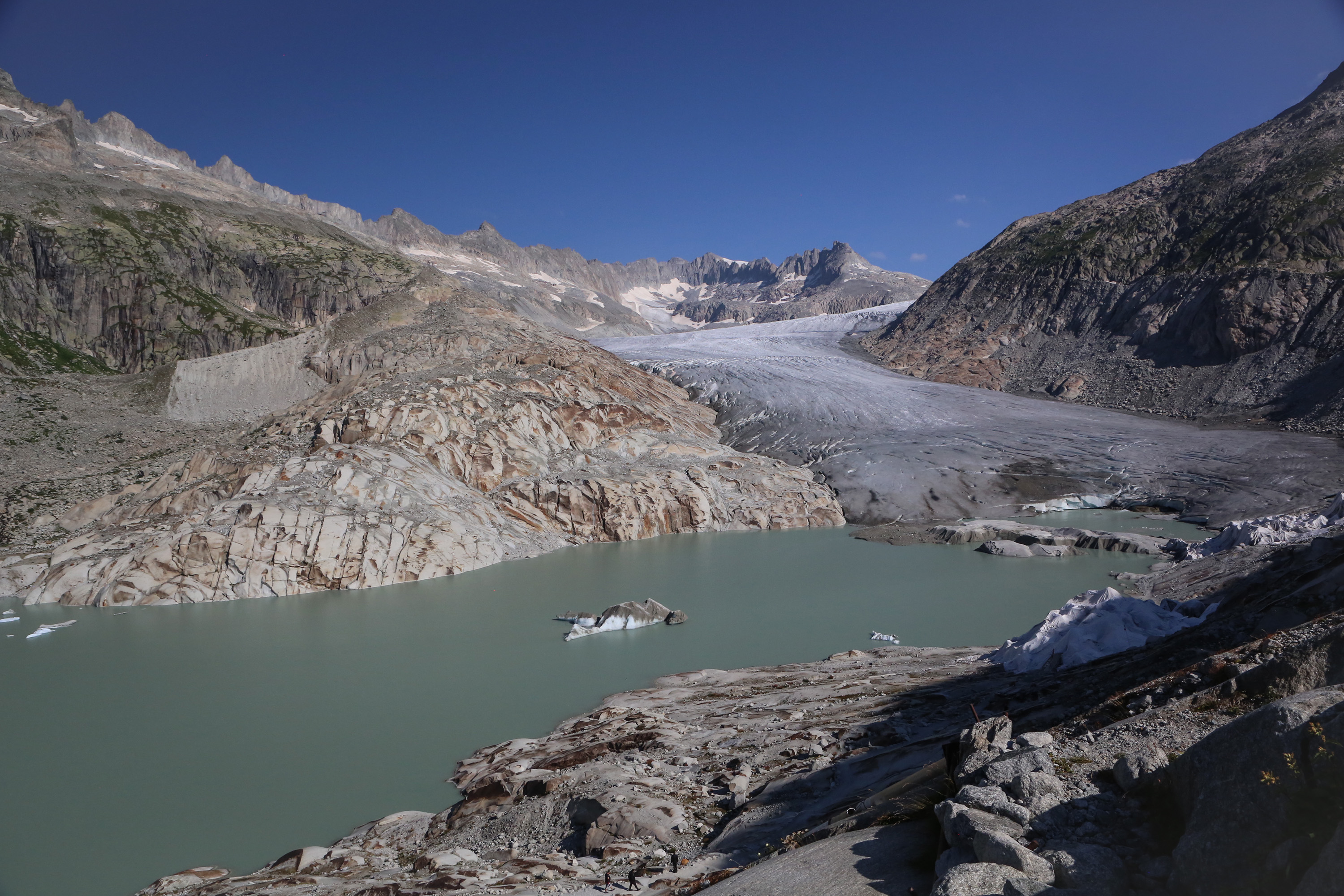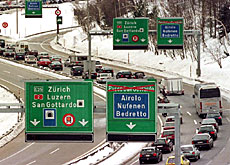Bottlenecks strangle Swiss traffic

A closed road tunnel can lead to chaos on Switzerland’s motorway network, a fact highlighted over the past few days by a fatal accident near Zurich, and road works above Montreux.
But while the authorities and engineers say they are aware of the problem, they have yet to come up with solutions.
Road traffic is expected to come to a standstill in many parts of Switzerland this weekend as the Easter holidays come to an end.
Drivers could find themselves stuck in long tailbacks because of road works or congestion of the national motorway network.
For the past few years, regular traffic jams have occurred in the same places. The Gotthard road tunnel, along the main north-south axis, is one of the focal points for tailbacks.
Other black spots include the motorway along Lake Geneva, and the triangle formed by Bern, Basel and Zurich. These roads are often congested even outside peak hours.
And the problem has been compounded recently as Switzerland’s motorways get older. The authorities have been forced to repair and upgrade roads and tunnels.
Repair work
The latest example is repair work being carried out on the Glion motorway tunnel above Montreux, in canton Vaud.
One of the tunnel’s two tubes has been shut down for nearly eight months, an operation that will be repeated on the other side next year, at a cost of SFr100 million ($77.6 million).
The move has prompted fears among drivers and businesses of massive tailbacks, cutting workers and road transport off from canton Valais. The authorities are also concerned the tourism industry will suffer.
The Vaud and Valais cantonal governments have now come up with proposals to ease the flow of traffic, including encouraging drivers to hop on trains and leave their cars behind.
The motorway is one of two roads leading between Vaud and Valais, the other passing through Montreux. In 30 years, the number of vehicles passing through the tunnel has risen from 9,000 to 60,000 on some days.
“Glion is the road project with the biggest effect on traffic, but it’s not the only one,” said Jolanda van de Graaf, spokeswoman for the Federal Roads Authority.
Swiss drivers can expect more of the same in years to come, warns van de Graaf, although she admits it is difficult to estimate the impact of future road works.
“Each project has its own requirements,” she told swissinfo.
Renovation work on Switzerland’s vital road tunnels has become a priority since a fire killed 11 people in the Gotthard in October 2001. The tragedy highlighted the need for improved security as traffic continues to increase.
Too much traffic
The traffic increase has stretched some parts of the road network beyond its planned capacity. “This is main reason behind most of the tailbacks, rather than accidents or road works,” said van de Graaf.
An accident in the Baregg tunnel near Zurich on Wednesday, which killed one person and blocked all traffic towards Bern, showed how vulnerable the road network is.
In recent years, some motorways have been widened to improve the flow of traffic, but a proposal to fund new road projects to the tune of SFr350 million was turned down by voters in February.
The proposal included the possibility of building a second road tunnel under the Gotthard pass.
The country’s main automobile club, the Touring Club of Switzerland (TCS) supported the proposal, but says that other solutions will have to be found now.
“The national road network is insufficient,” said TCS spokesman, Joël Grandjean. “Something needs to be done, so we have to look for new ways of solving the traffic problem.”
Budget cuts
The Federal Roads Authority is considering what its priorities will be in the future. “Even if we decide what needs to be done first, there are no guarantees this will happen because of budget restrictions,” warned van de Graaf.
Building and maintaining Switzerland’s road network is an expensive business, mainly because of geography.
“We have to build many tunnels and bridges simply because there are so many natural obstacles,” said Hans-Rudolf Egli, a geographer at Bern University.
Egli told swissinfo the Swiss were able to build so many roads because the economy was strong enough, guaranteeing access to virtually any inhabited place in the country.
“Now, we are having second thoughts because we have to weigh the potential benefits with the cost,” he added.
For some politicians, building new roads or increasing capacity may not be a solution in the future.
“In the past 30 years, the motorway network has become four times bigger,” said François Marthaler, canton Vaud’s roads minister.
“In the same period, the railway network has only increased one per cent.”
swissinfo, Scott Capper
Over the past 30 years, Switzerland’s motorway network has grown fourfold.
In the same time frame, the railway network has only increased one per cent.
In 1970, 9,000 vehicles drove through the Glion tunnel and 15,000 through the Baregg tunnel.
Today, a daily average of 44,000 is recorded at Glion and 92,000 at Baregg.

In compliance with the JTI standards
More: SWI swissinfo.ch certified by the Journalism Trust Initiative











You can find an overview of ongoing debates with our journalists here . Please join us!
If you want to start a conversation about a topic raised in this article or want to report factual errors, email us at english@swissinfo.ch.